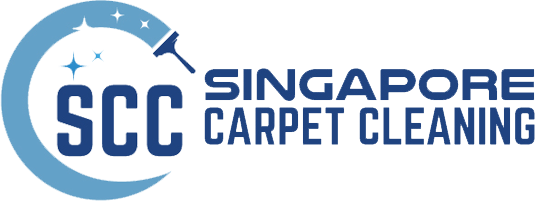
Preserving the Color and Texture of Your Carpets
November 9, 2023
Pet-Friendly Upholstery Cleaning for the New Year
January 16, 2024Health Risks of Untreated Water-Damaged Carpets
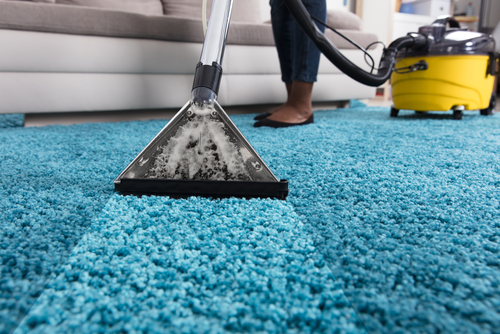
Health Risks of Untreated Water-Damaged Carpets. Water-damaged carpets pose a silent threat in many homes and workspaces. Often overlooked, this issue significantly impacts indoor air quality and health.
This comprehensive article delves into the health risks and consequences of neglecting water-damaged carpets, emphasizing the need for prompt and effective action.
Understanding Water-Damaged Carpets
Causes of Water Damage
Carpets can suffer water damage from various sources. Common causes include flooding from natural disasters, leaking pipes, overflowing sinks or bathtubs, and spillages that are not promptly addressed.
Even high humidity levels in the environment can contribute to gradual water damage in carpets.
Types of Water Damage
- Clean water, originating from sanitary sources like broken pipes or water tanks, poses the least health risk if treated promptly.
- Greywater, from sources like washing machines or dishwashers, contains some contaminants and requires more caution.
- The most dangerous is blackwater, typically from sewage or natural floodwaters, heavily laden with harmful bacteria and pathogens.
Health Risks of Mold and Mildew
Mold Growth in Carpets
Water-damaged carpets create a perfect breeding ground for mold and mildew. These fungi proliferate in moist environments, embedding themselves deep within carpet fibers and padding. Over time, they spread, becoming harder to eradicate and posing serious health risks.
Health Effects of Mold Exposure
Exposure to mold can lead to a range of health issues, particularly in those with allergies, asthma, or weakened immune systems. Inhaling or coming into contact with mold spores can trigger allergic reactions, respiratory difficulties, and in severe cases, lead to asthma attacks. Long-term exposure to high levels of indoor mold may even contribute to the development of asthma in some individuals.
Volatile Organic Compounds (VOCs)
Mold in water-damaged carpets can also release VOCs into the air. These compounds are a byproduct of mold growth and can cause symptoms like headaches, dizziness, eye, nose, and throat irritation, and in severe cases, lead to neurological damage or respiratory illnesses.
Allergies and Respiratory Problems
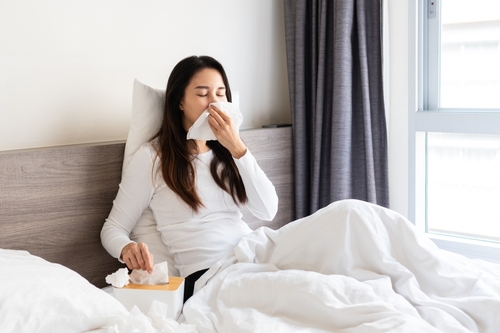
Allergic Reactions
Water-damaged carpets can become hotspots for various allergens, including dust mites, pet dander, and pollen trapped in the fibers.
These allergens, coupled with mold spores, can exacerbate allergic reactions, causing symptoms like sneezing, runny or stuffy nose, itchy or watery eyes, and skin rashes.
Respiratory Issues
Prolonged exposure to allergens and mold in damp carpets can lead to more serious respiratory issues.
People may experience chronic coughing, wheezing, shortness of breath, and chest tightness. In some cases, this can evolve into chronic respiratory conditions like bronchitis or worsen pre-existing lung conditions.
Skin Irritations and Infections
Dermatitis and Skin Conditions
Direct contact with water-damaged, moldy carpets can cause various skin problems. Dermatitis, characterized by an itchy, red rash, is common. Other conditions include eczema flare-ups or athlete’s foot, a fungal infection that thrives in moist environments.
Fungal Infections
The risk of fungal infections is heightened with water-damaged carpets. Pathogens can enter through small cuts or abrasions on the skin, leading to infections that can be challenging to treat, especially in immunocompromised individuals.
Impact on Vulnerable Groups
Children are particularly susceptible to the health risks posed by water-damaged carpets. Their developing immune systems and close proximity to the floor increase their exposure to mold and allergens. Respiratory issues, skin irritations, and allergic reactions can be more severe in children.
The elderly and those with weakened immune systems are at heightened risk from exposure to mold and allergens. These individuals are more likely to develop severe respiratory infections and other health complications from prolonged exposure to unhealthy indoor environments.
Preventive Measures and Carpet Removal
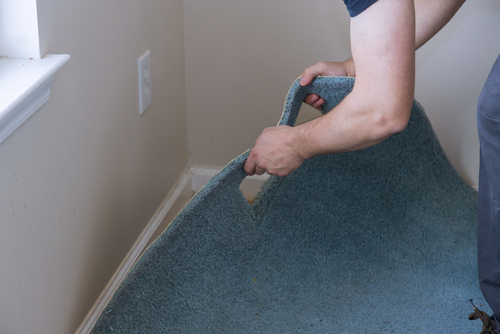
Preventing water damage involves immediate attention to spills and leaks, maintaining optimal humidity levels, and ensuring adequate ventilation. Regular cleaning and vacuuming of carpets help remove potential allergens and prevent mold growth.
In cases of severe water damage, particularly involving grey or blackwater, carpet removal becomes necessary.
Professional removal and replacement of the carpet ensure the elimination of health hazards, especially in cases where the carpet cannot be adequately cleaned or dried.
Professional Help and Remediation
Certified water damage restoration professionals bring expertise and specialized equipment to accurately assess the extent of the damage.
They use industrial-grade water extractors, air movers, and dehumidifiers to efficiently dry out the affected areas, minimizing the risk of mold growth.
Professionals also conduct thorough inspections using moisture meters and infrared cameras to detect hidden moisture pockets that might not be visible to the naked eye.
This step is crucial in ensuring that all affected areas are identified and treated.
In cases of mold growth, professional remediation involves not only removing the visible mold but also addressing the source of moisture to prevent its recurrence.
This process often includes the application of antimicrobial agents to eliminate mold spores and prevent future growth.
For carpets damaged by grey or blackwater, professionals provide deep cleaning services to sanitize and deodorize the carpets, ensuring they are free of harmful bacteria and pathogens.
In severe cases, they might recommend the complete removal and replacement of the carpet to ensure a safe and healthy environment.
Additionally, water damage restoration professionals can offer advice on preventive measures and improvements in home maintenance practices to reduce the risk of future water damage.
Health Risks of Untreated Water-Damaged Carpets – Conclusion
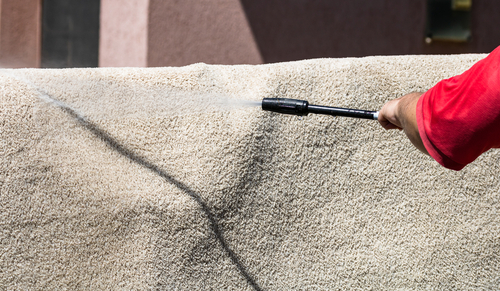
The health risks associated with untreated water-damaged carpets are significant and multifaceted.
From allergic reactions and respiratory problems to more severe conditions like fungal infections, the impacts on health can be profound.
Recognizing the signs of water damage and taking immediate action, whether through DIY measures or professional assistance, is crucial for maintaining a healthy indoor environment.
Regular monitoring and maintenance of carpets can prevent these issues, safeguarding the health of all occupants, especially vulnerable groups like children and the elderly.
If you’re facing the challenge of water-damaged carpets in your home or workplace, don’t delay in addressing the issue.
Contact our team of professionals today for a comprehensive assessment and effective remediation solutions. Protect your health and your property by taking action now!

